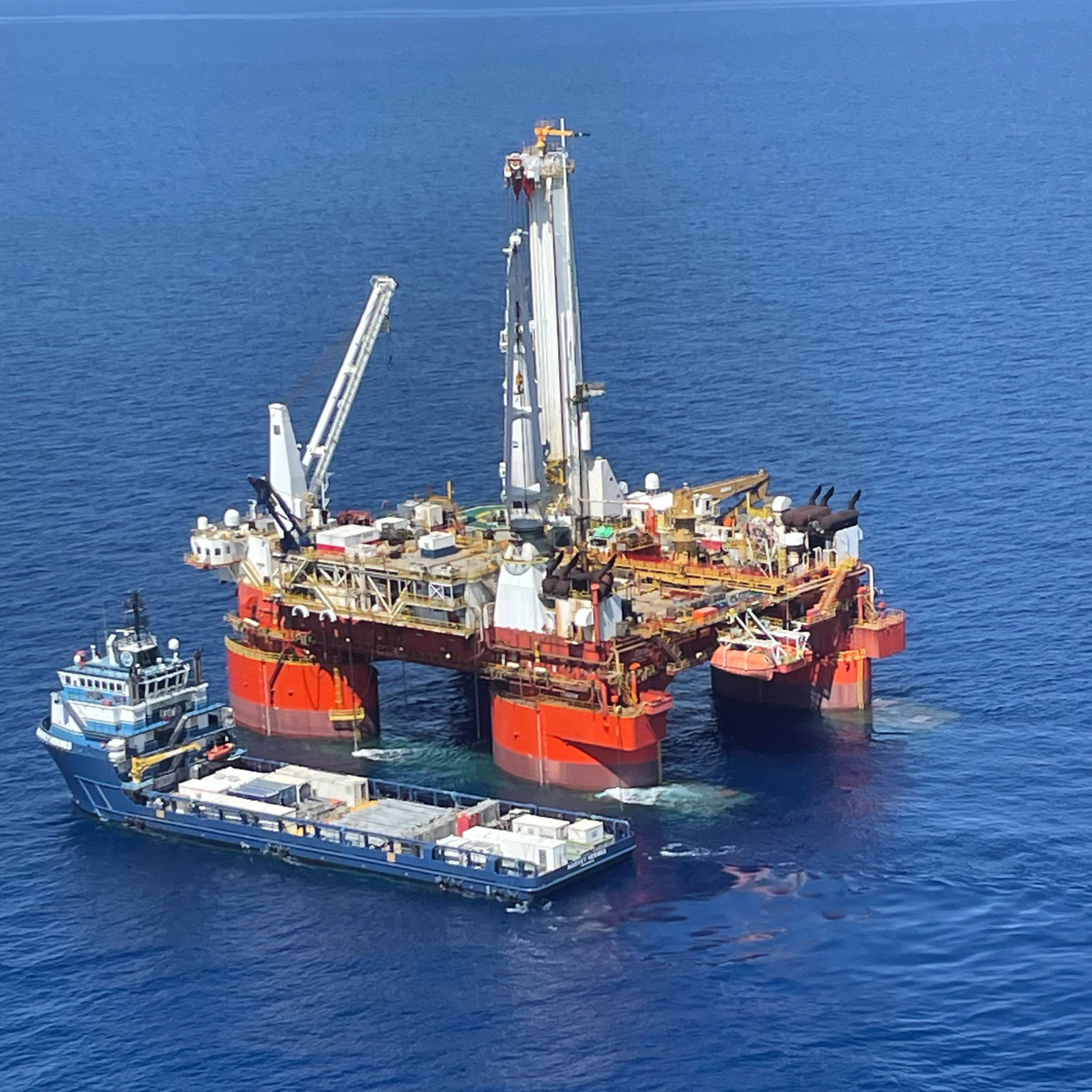FECM and NETL, in partnership with the University of Texas at Austin, completed a Gulf of Mexico drilling and coring expedition as part of DOE’s methane hydrates research and development program.
Office of Fossil Energy and Carbon Management
January 18, 2024The U.S. Department of Energy’s (DOE) Office of Fossil Energy and Carbon Management (FECM) and DOE’s National Energy Technology Laboratory (NETL), in partnership with the University of Texas at Austin, completed a Gulf of Mexico drilling and coring expedition occurring in the Terrebonne Basin, Gulf of Mexico Outer Continental Slope, as part of DOE’s methane hydrates research and development program. The expedition was led by the University of Texas at Austin with the support of seven subcontracting U.S. universities including, Lamont-Doherty Earth Observatory, Ohio State University, the University of Washington, Oregon State University, Colorado School of Mines, Tufts University, and the University of New Hampshire, as well as the U.S. Geological Survey, and the U.S. Bureau of Ocean Energy Management, to characterize the nature of known gas hydrate deposits in the deepwater in the Gulf of Mexico.
The primary mission of the research and development program is to advance the scientific understanding of gas hydrates as they occur in nature, their resource potential, and role in climate change. Gas hydrates are naturally occurring combinations of natural gas and water that form in cold temperatures and high pressure. These hydrates house 5-22% of the world’s organic carbon. This carbon reservoir is a potential energy resource, as well as a possible source of geohazards and a potential driver for changes in ocean chemistry and climate.

In 2001, DOE established an initial joint industry project with Chevron, which conducted a research expedition in 2005 focused on collecting logging and seismic data along with some of the first (non-pressurized) core samples. A subsequent 2009 expedition set out to identify areas that would have high saturations of gas hydrate through drilling and logging.
In 2014, a new DOE project was established with the University of Texas at Austin with a goal to further characterize and collect pressurized samples from the hydrate locations identified through prior drilling and logging. In 2017, a Gulf of Mexico expedition targeted hydrate deposits that were previously drilled in the Green Canyon 955 site during the 2009 joint industry project expedition.
Building on the success of the 2017 technology demonstration, DOE, the University of Texas at Austin, and its partners embarked on the development of a comprehensive program [in 2023] to characterize and sample the entire gas hydrate reservoir system in a single deepwater Gulf of Mexico location. A key focus of this project was to evaluate the ability of the pressure coring tool with a ball valve to effectively and consistently capture, collect, and recover hydrate bearing coarse grained sediment pressure cores. Twenty-one pressurized core samples, each 3.3 feet in length, were recovered in pristine condition with high-quality gas hydrates.
The goal of the 2023 expedition was to drill, collect log data, and recover hydrate bearing sand sediment pressure cores while demonstrating the pressure-coring capability of the coring tool. From July 30 to September 1, 2023 (34 days at sea), the team drilled two boreholes in the deepwater (3,454 feet water depth) Walker Ridge 313 site, using the Helix Q-4000 semisubmersible drillship. The second hole was the deepest well ever drilled below the seafloor to sample pressure core in hydrate systems.
In total, 1,840 feet of conventional core and 590 feet of pressure core was acquired, and 11 temperature and pressure measurements were made. On board, pressure cores were logged, X-rayed, and measured of dissolved methane. Nine samples were stored to maintain in-situ reservoir conditions. These pressure cores will form the foundation of future work measuring hydrate concentration, strength, and permeability of the reservoir. After the conclusion of the 2023 Gulf of Mexico expedition, samples underwent an initial suite of analyses and critical samples were further preserved and shipped to research groups across the country for more detailed scientific analysis.
To keep up to date with FECM project updates, sign up for future news alerts and follow us on Facebook, LinkedIn, and Twitter.
Additional Gulf of Mexico Gas Hydrates Project Information
- Learn more about this project on the University of Texas at Austin’s website: UT-GOM2-1: Hydrate Pressure Coring Expedition at GC 955 &Methane Hydrate: The Mission Continues
- View the initial research results from the evaluation of FY 2017 samples: Volume 104 Issue 9 | AAPG Bulletin
- A second AAPG Special Issue was published that reported research findings: Volume 106 Issue 5 | AAPG Bulletin

